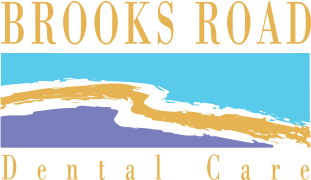Air Abrasion
Compared to traditional methods of removing decay, air abrasion involves less heat, pressure and vibration and is found to be more comfortable by many patients.
 For many patients, the symbol of dental fear is the drill. The sound, the heat, the vibration, the pressure—all can be uncomfortable for patients and cause dental visit avoidance, making the possibility for toothaches and costly restorative dental work more of a probability. Air abrasion may help to alleviate fears of the dentist and procedures that traditionally use drills.
For many patients, the symbol of dental fear is the drill. The sound, the heat, the vibration, the pressure—all can be uncomfortable for patients and cause dental visit avoidance, making the possibility for toothaches and costly restorative dental work more of a probability. Air abrasion may help to alleviate fears of the dentist and procedures that traditionally use drills.
Besides removing decay, air abrasion can remove old restorations, like fillings, that may need to be replaced. For example, some patients have their old amalgam, or metal, fillings removed and replaced by composite, or tooth-colored, fillings that look and feel more natural.
What is Air Abrasion?
Air abrasion is a drill-less alternative for removing decay that uses a specialized dental tool to spray compressed air and tiny abrasive particles in a fine stream. Air abrasion gently and gradually removes spots of tooth decay or staining from the surface of teeth—without harming the natural tooth structure. The removed decay and particles are then suctioned away. What’s left is a textured surface well-suited to holding onto restorative materials to “build” the tooth back to its natural shape.
Additionally, because air abrasion is gentler on patients’ healthy teeth structures and mouth, they don’t need to rely on anesthesia to remain comfortable during a procedure with air abrasion. That means that in addition to not needing drills, we don’t need to use needles! Plus, because anesthesia isn’t necessary with air abrasion, patients don’t need to wait hours for the numbing effect to dissipate so they can continue with their lives.
Procedure Overview
When going in for an air abrasion procedure, patients should still expect some preparation before the tool is even turned on. Air abrasion removes decay by turning it into a powder, which needs to be removed safely. Dentists use suction to catch these particles, but also take measures to protect patients in case the particles escape the procedure area. For example, patients should expect their nose and eyes to be covered during the procedure to minimize the chance of rogue particles causing discomfort or damage there.
While air abrasion is a great option for many patients, it may not be ideal for all. Patients with respiratory issues, such as asthma, should talk to their dentist about the measures taken to prevent inhalation of the powder created from air abrasion.
Additionally, because air abrasion is best for surface decay, deep decay will need to be removed with the traditional drill and accompanying anesthesia. For this reason, it’s especially important for patients hoping to avoid drills to keep up with their regular hygiene appointments and at-home cleaning routines. At best, you’ll prevent decay from requiring dental work. But if you do need work, it’s likely that your dentist will catch it early enough at one of your six-month visits that you’ll be able to benefit from the gentleness and comfort of air abrasion.
We are proud to offer our patients air abrasion as a drill-less alternative for decay and stain removal.
